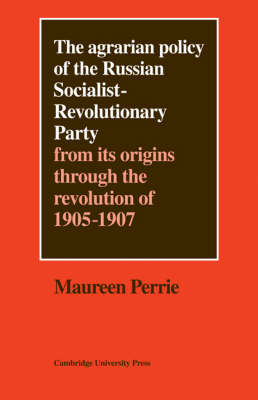Cambridge Russian, Soviet and Post-Soviet Studies
1 total work
The Agrarian Policy of the Russian Socialist-Revolutionary Party
by Maureen Perrie
Published 27 January 1977
The Socialist-Revolutionary (SR) party gained an overall majority in the election to the Russian Constituent Assembly, which was dissolved by the Bolsheviks in January 1918. The SRs derived the bulk of their electoral support from the peasantry, and the gulf between the predominantly urban Bolshevik party and the rural masses was to create immense problems for the Soviet government in the 1920s, culminating in the horrors of forced collectivization. The SRs offered an alternative vision of the Russian peasant's path to socialism. They were closer to the peasantry than any other revolutionary party, and more aware of the problems involved in implementing a socialist transformation of Russian agriculture. In this study the author traces the development of SR agrarian policy in the party's formative years, from the period of disillusionment which followed the failure of the Populist 'movement to the people' of the 1870s, through the revolutionary years 1905–7, to the subsequent reaction under Stolypin.
